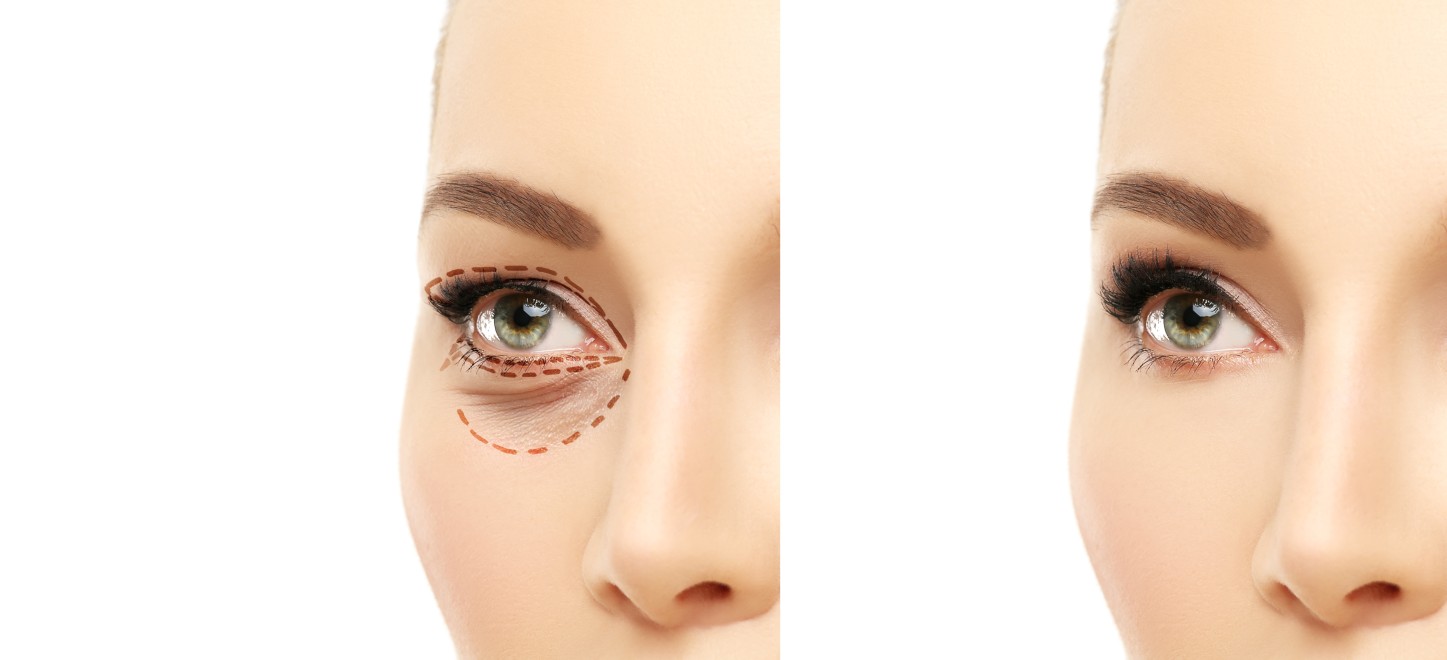Fat Grafting Procedure- Uses, Types, Benefits, and Risks

TABLE OF CONTENTS
Wouldn’t it be great if hair could be relocated from one part of your head to another? Well, the same goes for fat as well. Fat grafting is a procedure used in Aesthetic and Reconstructive surgery, where the fat is taken from your belly, thigh, or hip and filled in areas that need it, such as the face, lips, breasts, or buttocks. [1]
With this method, not only do you get to enhance your bodily features, but it also uses fat from your body, which further makes it safer than synthetic fillers and implants.
For those contemplating fat transfer augmentation, questions about results, duration, and the risks involved are almost certain. This guide will provide you with everything to know about fat grafting, from common uses to intricate types of procedures, so that you are well-informed when making a decision.
What is Fat Grafting?
Fat grafting, or fat transfer, is a procedure where excess fat is extracted from one body area and injected into another. The goal is to improve volume, contour or correct defects caused by ageing, injuries, or medical conditions.
Plastic surgeons commonly employ this operation for aesthetic and reconstructive reasons. Unlike implants and fillers, body grafting offers a more natural touch and lowers the possibility of allergic responses because it utilises your own fat. The procedure usually has the following steps:
Fat Removal: Liposuction is utilised to remove the fat from the thighs, abdomen, or flanks. [2]
Preparation: The fats collected undergo a process of cleaning the unwanted waste and fluids by centrifugation or sedimentation
Fat Injection: The cleaned fats are injected in small portions to assist with even distribution and natural appearance.
Common Uses of Fat Grafting
Fat transfer augmentation is predominantly used in both reconstructive and aesthetic procedures. Whether your needs are restoring youthful volume, correcting body asymmetries, or simply enhancing the contours of your body, fat grafting is the right procedure to use because it is natural and long-lasting. More recent developments are using fat for regenerative purposes especially for hair loss, improving scars and rejuvenation of the skin when used as NANOFAT. Below are some of the most popular applications:
1) Facial Fat Grafting
Over time, the facial features lose natural fat, resulting in loose skin, dynamic wrinkles, and hollowness. [3] The lost volume caused by ageing can quickly be replenished with fat grafting on your face.
Restores volume in the cheekbones, jawline, and temples to appear youthful.
Deep creases around the mouth, nose, and forehead become soft. Smooth out the forehead, wrinkles, and fine lines.
It fills sunken areas under the eye, reducing dark circles and tired looks. Reduces hollowness under the eyes.
Unlike fillers that need regular touch-ups, facial fat grafting can last years.
The graft cost varies depending on the number of areas treated and the surgeon's expertise.
2) Fat Transfer to Lips
If you want fuller lips but without the use of fillers, the transfer offers a much more natural and permanent solution.
Pump up lip volume without synthetic substances. Creates more enhanced, naturally looking lips.
Reduces fine lines caused by ageing around the mouth. Softens lip wrinkles.
Unlike hyaluronic acid fillers that dissolve within months, it can last several years. Longer lasting than fillers.
Since the fat comes from your body, the risk of allergic reactions is unlikeliest. Minimal risks of rejection.
3) Breast Fat Grafting
Not all breast enhancement needs implants. This is a more natural approach for some women as it also improves symmetry. Fat grafting is now used routinely as part of breast augmentation with implant (Hybrid Breast Augmentation)
Breast size - Ideal for women who want more subtle cleavage while adding volume. Enhances breast size and shape.
Corrects asymmetry- This technique is effective for women with uneven breasts.
Used in breast reconstruction- It is helpful for patients recovering from mastectomy or lumpectomy. Fat grafting is also an integral part of breast reconstruction using expander/implant.
No foreign implants- There are no silicone or saline implants, so the associated risks related to implants are reduced.
4) Brazilian Butt Lift (BBL)
A Brazilian Butt Lift (BBL) is considered one of the most popular body grafting procedures, as it helps an individual achieve an hourglass figure. [4]
Lifts and shapes the buttocks- It enhances the roundness and fullness of the buttocks.
Improves body proportions- It reshapes the buttocks by transferring fat from the abdomen, thighs or flanks to the buttocks.
Feels more natural than implants- The results are more appealing as they are from the own body fat and, therefore, are natural.
Minimal scarring- Unlike implants, fat transfer augmentation for the buttocks has lesser scarring since very small cuts are made.
Recovery requires careful post-procedure care, including avoiding sitting directly on the buttocks for a few weeks.
5) Hand and Scar Repair
Ageing and injuries can leave hands looking wrinkled, bony, or scarred. Fat transfer augmentation can restore volume and smooth out imperfections.
Restores youthful hands – Fills in bony, veiny hands to create a softer look.
Improves scar appearance – Softens scars caused by surgery, burns, or trauma.
Used in reconstructive surgery – Helps repair deformities and post-surgical skin depressions.
Unlike artificial fillers, fat grafting offers long-term improvement for hand rejuvenation and scar correction.
Benefits of Fat Transfer

Opting for fat grafting over synthetic fillers or implants comes with several advantages:
Natural Results: Since it uses your fat, the texture and feel blend seamlessly with surrounding tissues.
Long-Lasting Effects: While some fat cells may not survive, the ones that do integrate permanently.
Lower Risk of Allergic Reactions: Unlike artificial fillers, your body won’t reject its fat.
Minimal Incision Scars: The procedure involves small injections, reducing visible scarring.
Dual Benefits: Removes unwanted fat from areas like the belly or thighs while enhancing another body part.
Types of Fat Grafting Procedures
1) Micro-Fat Grafting
Used for small areas like under-eye hollows, wrinkles, and scars. This method ensures precise fat placement with minimal swelling.
2) Macro-Fat Grafting
It is ideal for larger areas such as the buttocks, breasts, or cheeks. More fat is injected to achieve significant volume enhancement.
3) Nano-Fat Grafting
This technique is used for skin rejuvenation, fine lines, and quality. The fat is processed into a fine liquid before injection.
4) Structural Fat Grafting
A multi-layer technique that injects fat at different depths to achieve more natural and long-lasting results.
How Long Do Fat Grafts Last?
One of the most common concerns with fat transfer is how long the results will last. The truth is fat grafting is permanent, but some of the transferred fat cells won’t survive the process.
After the procedure, about 30-50% of the injected fat may be reabsorbed by the body within the first few months. [5] The surviving fat cells, however, will establish a new blood supply and remain for years. To improve fat survival rates:
Avoid putting pressure on the treated area for the first few weeks
Maintain a stable weight to prevent fat fluctuations
Follow all post-op care instructions provided by your surgeon
For larger areas like the breasts or buttocks, multiple sessions might be needed to achieve the desired volume.
Risks of Fat Transfer
The risks that come with fat grafting are:
Fat Transfer Absorption: Uneven results because not all the transferred fat survives.
Infection: Infection is unusual but can occur due to inadequate follow-up care after the procedure.
Fat Embolism: In rare instances, fat may enter a blood vessel and migrate to the lungs.
Fat lumps: These may result from uneven fat injection or over-injection – too much fat added too quickly.
Internal Scarring: The swelling and bruising produced by fat transfer is extreme, but not entirely meritless. Scarring is present while stitches are healing but will disappear afterwards.
Conclusion
Fat grafting is a technique that enhances beauty by using fats from the patient’s body. Fat transfer augmentation is ideal for facial rejuvenation, lip plumping, and body shaping procedures as it combines safety, efficacy, and long-lasting results.
However, the results differ from person to person; thus, seeking a consultant who is a subject matter expert will be key. The expert will consider all your concerns and expectations and decide if you qualify for body grafting.
If you’re trying to determine the cost of facial fat grafting, fat transfer to lips, or any other surgery, visit a plastic surgeon at your nearest super-speciality hospital for a tailored consultation.
FAQ's
1) How long does fat grafting last?
Fat grafting results are long-lasting, but not all transferred fat survives. The final results are visible after six months and can last for years with proper care.
2) Is fat transfer augmentation safe?
Yes, when performed by a skilled surgeon, fat transfer is safe. However, risks like fat embolism, infection, and uneven results exist, making it crucial to choose an experienced professional.
3) How much does facial fat grafting cost?
Facial fat grafting cost varies based on location, surgeon’s expertise, and the treated areas.
4) Can fat transfer to lips replace fillers?
Fat transfer to lips provides longer-lasting, natural-looking results than dermal fillers, but it may require multiple sessions for optimal volume retention.
5) What is the recovery time for body grafting?
Recovery varies by procedure. Minor treatments like facial fat grafting heal in a week, while larger areas like BBL or breast grafting may take several weeks.
Citations:
Vasavada, A., & Raggio, B. S. (2023, July 31). Autologous fat grafting for facial rejuvenation. StatPearls - NCBI Bookshelf. https://www.ncbi.nlm.nih.gov/books/NBK557860/
Liposuction - Mayo Clinic. (n.d.). https://www.mayoclinic.org/tests-procedures/liposuction/about/pac-20384586#
Garg, S., Khan, N., & Makadia, S. (2018). Proposed global drooping and wrinkles classification and scoring system for aging face with validation and experience on 54 Indian subjects. Indian Journal of Dermatology Venereology and Leprology, 84(6), 672. https://doi.org/10.4103/ijdvl.ijdvl_418_17
Professional, C. C. M. (2025, March 19). Brazilian butt lift. Cleveland Clinic. https://my.clevelandclinic.org/health/treatments/23308-brazilian-butt-lift
Simonacci, F., Bertozzi, N., Grieco, M. P., Grignaffini, E., & Raposio, E. (2017). Procedure, applications, and outcomes of autologous fat grafting. Annals of Medicine and Surgery, 20, 49–60. https://doi.org/10.1016/j.amsu.2017.06.059





